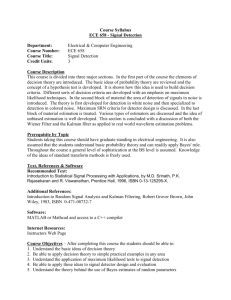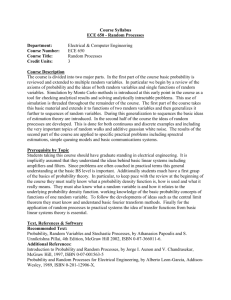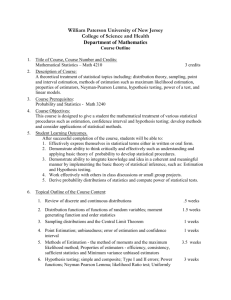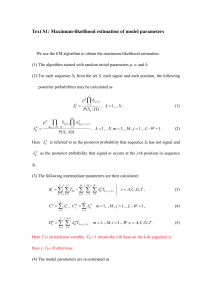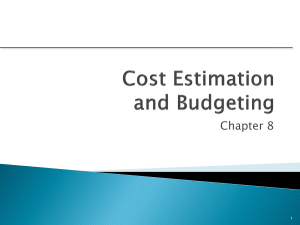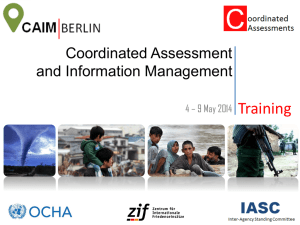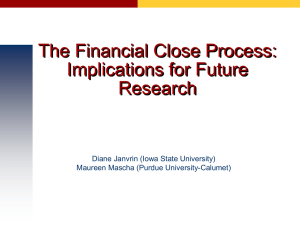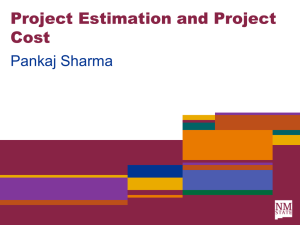Objective Communication and Measurement
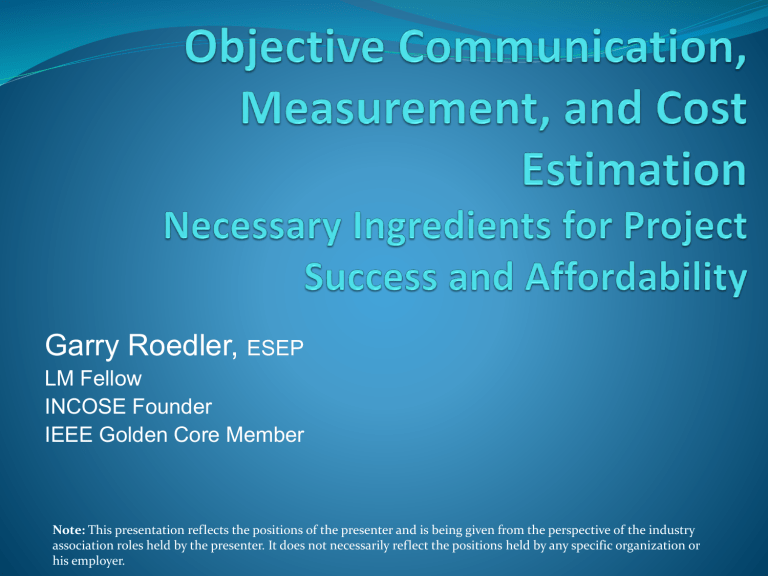
Garry Roedler,
ESEP
LM Fellow
INCOSE Founder
IEEE Golden Core Member
Note: This presentation reflects the positions of the presenter and is being given from the perspective of the industry association roles held by the presenter. It does not necessarily reflect the positions held by any specific organization or his employer.
Communication and Program
Performance
Statistics on program failures conclude:
Most IT projects are failing.
The predominant reason:
Communication breakdown.
The Standish Group CHAOS report
Reasons for project failure:
1.
Expectation mismatch amongst stakeholders.
2.
Improper and unclear communication with stakeholders.
Global Project Management
– Vote from LinkedIn
Poor communication is the reason most IT projects fail.
Web Poll – Computing Technology project failure paired with expectations and estimates
Elements of Objective Communication
Looks for the truth, uses hard data, tries to explain as well as predict
(deterministic)
Avoids potential of multiple interpretations or misinterpretation
Unambiguous
Clarity of meaning; single interpretation
Common vocabulary – words can have multiple meanings
Void of subjectivity
Avoids personal bias; keeps out personal values (“value-free”)
“Lack of judgment”
Factual
Quantitative, over qualitative
Focus on cause and effect
Predictive – looks for predictability
Based on universal laws
Validates theory with objective methods; e.g., experiments and surveys
Applies objective research with precise measurement and data analysis http://dilbert.com/dyn/str_strip/000000000/00000000/0000000/000000/00000/0000/900/929/929.strip.zoom.gif
Obstacles for Objective Communication
Psychological factors
E.g., ego, optimism/pessimism, past influences
Sociological factors
E.g., culture, peer pressure, social norms
Stake in the game
Lack of information
Lack of common experience
Lack of common vocabulary
Why Objective Communication is
Important in Engineering
Agreement between supplier and acquirer
Understanding the needs/requirements
Ensuring joint understanding
Team understanding of requirements
Insight to manage risks or make decisions
Not a spectator sport; participative
Understanding of decision criteria
Using predictive insight from leading indicators and risk assessments
Includes confidence in the information (i.e., uncertainty)
Progress and status
Example of Ambiguity
http://www.youtube.com/watch?v=kAG39jKi0lI
Semantic Ambiguity
The English language can be ambiguous … some sample newspaper headlines:
• “Lack Of Brains Hinders Research”
• “Kids Make Nutritious Snacks”
• “Queen Mary Having Bottom Scraped”
• “Miners Refuse to Work after Death”
• “Police Begin Campaign To Run Down
Jaywalkers”
• “Red Tape Holds Up New Bridge”
• “Juvenile Court To Try Shooting Defendant”
• “Panda Mating Fails; Veterinarian Takes
Over”
• “Astronaut Takes Blame For Gas In
Spacecraft”
• “Grandmother Of Eight Makes Hole In One”
• “Enraged Cow Injures Farmer With Ax”
• “NJ Judge to Rule on Nude Beach”
Syntactic Ambiguity
Punctuation can cause very different meanings!
Example of Subjectivity
Subjective language includes phrases such as:
Easy-to-use, user-friendly
Close quickly
High-speed, medium-sized, low-frequency (high, medium, low, large, small, …)
Best practices
Minimize, maximize, optimize
Subjective terms:
Create problems in verification
Often lead to Affordability issues
The use of these adjectives allows for multiple interpretations
Example of Potential Numerical
Misinterpretation
Image from The World is Flat: http://salyee.wordpress.com/2010/11/06/week-11-infographics/ 10/14/12
970
965
960
955
950
945
940
935
Option A Option B Option C
Ряд1
1000
800
600
400
200
0
Option A Option B Option C
Ряд1
Drug company states that a competing drug increases risk of death by 100%.
Using Objective Information to
Improve Program Decisions
Aids programs by providing true understanding and insight
Provides the facts and quantitative information
Focus on cause and effect
Allows predictions/estimations – built on historical data, empirical relationships, accepted principles, …
Validated through experiments, surveys, and calibration
Cannot eliminate all subjective, ambiguous information
Assumptions
Differences from historical information
Emerging information
Humans are involved
How this Relates to Measurement &
Cost/Schedule Estimating
Measurement is at the root of objectivity
Basis of factual information
Basis of models and estimation
Realize all information is not precise – account by using ranges and distributions, where applicable
Necessary for calibration to improve applicability
Cost/schedule estimation provides a model of a class of programs
Basis of predictions using key variables (drivers)
Developed from objective research (i.e., precise measurement and data analysis)
Provides a point of departure from what is known
But … requires verification and validation
Does this look like your program?
http://dilbert.com/dyn/str_strip/000000000/00000000/0000000/000000/00000/6000/300/6379/6379.strip.zoom.gif
Where We Are Now
Leading Indicators
Cost Estimation
COCOMO®
Other
“COCONuts” and Vendor
Models for
SW and SE
…
SE Leading
Indicators Guide
System Devel.
Perf. Measurement
Technical
Measurement
Standardization & Harmonization
Applications / Other Guidance
Measurement
Process Std
Life Cycle Process
Stds – 15288, 12207
SEVOCAB
PSM CMMI
Where We Are Now
Where We Are Now
Where We Are Now
Where We Are Now
Where We Still Need To Go
Leading Indicators
Extensive piloting and usage of SELI and SDPM
Linkage of SELI to results of SE
Effectiveness Survey and Risk
Models
Leading Indicators for SW
Cost Estimation
Enhance ability to support trades
Account for more of the key decisions (e.g., Product Lines)
Better account for uncertainty
Integrated cost estimation
Full system cost estimation
Full life cycle cost estimation
Standardization & Harmonization
Complete harmonization of System and SW
Continue to migrate to common vocabulary
Applications / Other Guidance
Revision of PSM guidance to state of standard
Extend PSM for emerging information needs
Determine measures and cost estimation that best applies through life cycle stages and decisions
Microsoft Clip Art Image 2007


